Perovskite materials in X-ray detection and imaging: recent progress, challenges, and future prospects
- PMID: 38390503
- PMCID: PMC10883145
- DOI: 10.1039/d4ra00433g
Perovskite materials in X-ray detection and imaging: recent progress, challenges, and future prospects
Abstract
Perovskite materials have attracted significant attention as innovative and efficient X-ray detectors owing to their unique properties compared to traditional X-ray detectors. Herein, chronologically, we present an in-depth analysis of X-ray detection technologies employing organic-inorganic hybrids (OIHs), all-inorganic and lead-free perovskite material-based single crystals (SCs), thin/thick films and wafers. Particularly, this review systematically scrutinizes the advancement of the diverse synthesis methods, structural modifications, and device architectures exploited to enhance the radiation sensing performance. In addition, a critical analysis of the crucial factors affecting the performance of the devices is also provided. Our findings revealed that the improvement from single crystallization techniques dominated the film and wafer growth techniques. The probable reason for this is that SC-based devices display a lower trap density, higher resistivity, large carrier mobility and lifetime compared to film- and wafer-based devices. Ultimately, devices with SCs showed outstanding sensitivity and the lowest detectable dose rate (LDDR). These results are superior to some traditional X-ray detectors such as amorphous selenium and CZT. In addition, the limited performance of film-based devices is attributed to the defect formation in the bulk film, surfaces, and grain boundaries. However, wafer-based devices showed the worst performance because of the formation of voids, which impede the movement of charge carriers. We also observed that by performing structural modification, various research groups achieved high-performance devices together with stability. Finally, by fusing the findings from diverse research works, we provide a valuable resource for researchers in the field of X-ray detection, imaging and materials science. Ultimately, this review will serve as a roadmap for directing the difficulties associated with perovskite materials in X-ray detection and imaging, proposing insights into the recent status, challenges, and promising directions for future research.
This journal is © The Royal Society of Chemistry.
Conflict of interest statement
The authors declare that they have no known competing financial interests or personal relationships that could have appeared to influence the work reported in this paper.
Figures



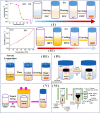



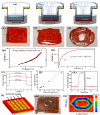
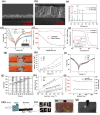

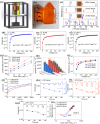


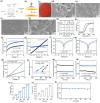


Similar articles
-
Supple Formamidinium-Based Low-Dimension Perovskite Derivative for Sensitive and Ultrastable X-ray Detection.ACS Nano. 2023 Jul 25;17(14):13638-13647. doi: 10.1021/acsnano.3c02476. Epub 2023 Jul 5. ACS Nano. 2023. PMID: 37404079
-
In Situ Crystal Growth and Fusing-Confined Engineering of Quasi-Monocrystalline Perovskite Thick Junctions for X-ray Detection and Imaging.ACS Nano. 2024 Oct 29;18(43):29846-29855. doi: 10.1021/acsnano.4c09823. Epub 2024 Oct 19. ACS Nano. 2024. PMID: 39425742
-
Large and Dense Organic-Inorganic Hybrid Perovskite CH3NH3PbI3 Wafer Fabricated by One-Step Reactive Direct Wafer Production with High X-ray Sensitivity.ACS Appl Mater Interfaces. 2020 Apr 8;12(14):16592-16600. doi: 10.1021/acsami.9b23158. Epub 2020 Mar 27. ACS Appl Mater Interfaces. 2020. PMID: 32216332
-
Recent advances in lead-free double perovskites for x-ray and photodetection.Nanotechnology. 2022 May 13;33(31). doi: 10.1088/1361-6528/ac6884. Nanotechnology. 2022. PMID: 35443239 Review.
-
Perovskite-Based X-ray Detectors.Nanomaterials (Basel). 2023 Jul 7;13(13):2024. doi: 10.3390/nano13132024. Nanomaterials (Basel). 2023. PMID: 37446540 Free PMC article. Review.
Cited by
-
Green Fabrication of Sulfonium-Containing Bismuth Materials for High-Sensitivity X-Ray Detection.Adv Mater. 2025 Jun;37(24):e2418626. doi: 10.1002/adma.202418626. Epub 2025 Apr 10. Adv Mater. 2025. PMID: 40207598 Free PMC article.
-
Analytical detection of the bioactive molecules dopamine, thyroxine, hydrogen peroxide, and glucose using CsPbBr3 perovskite nanocrystals.RSC Adv. 2024 Oct 15;14(44):32648-32654. doi: 10.1039/d4ra06576j. eCollection 2024 Oct 9. RSC Adv. 2024. PMID: 39411255 Free PMC article.
-
On the Feasibility of an LCD-Based Real-Time Converter for Ionizing Radiation Imaging.Materials (Basel). 2024 Jul 4;17(13):3320. doi: 10.3390/ma17133320. Materials (Basel). 2024. PMID: 38998400 Free PMC article.
-
Mechanical Stress-Induced Defects in Thick a-PbO Layers.Materials (Basel). 2025 Apr 23;18(9):1904. doi: 10.3390/ma18091904. Materials (Basel). 2025. PMID: 40363408 Free PMC article.
-
Band gap tuning of perovskite solar cells for enhancing the efficiency and stability: issues and prospects.RSC Adv. 2024 May 16;14(23):15876-15906. doi: 10.1039/d4ra01640h. eCollection 2024 May 15. RSC Adv. 2024. PMID: 38756852 Free PMC article. Review.
References
-
- Kasap S. O. Zahangir Kabir M. Rowlands J. A. Recent advances in X-ray photoconductors for direct conversion X-ray image detectors. Curr. Appl. Phys. 2006;6(3):288–292. doi: 10.1016/J.CAP.2005.11.001. - DOI
-
- Yang Y. Su Y. Ma W. Yang Y. M. Perovskite semiconductors for direct X-ray detection and imaging. J. Semicond. 2020;41(5):051204. doi: 10.1088/1674-4926/41/5/051204. - DOI
Publication types
LinkOut - more resources
Full Text Sources

